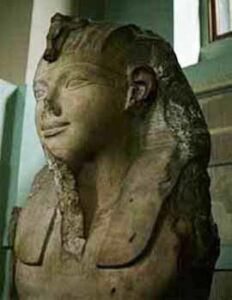
Amenemhat IV
Introduction
Amenemhat IV, also known as Amenemhat the Kid, was the penultimate Pharaoh of Egypt’s 12th Dynasty, ruling during the Middle Kingdom period, around 1929-1900 BCE. His reign was relatively short, lasting only a few years, but his impact on ancient Egypt was significant. This article delves into the life and rule of Amenemhat IV, focusing on his reign, achievements, and the legacy he left behind.
Early Life and Ascension to the Throne
Amenemhat IV was the son of Pharaoh Amenemhat III and Queen Iah, and he had an older brother named Sesostris III. It is believed that Amenemhat IV came to power after the death of his father, Amenemhat III, who was one of the most successful and powerful rulers of the 12th Dynasty. Amenemhat IV’s reign was marked by a series of events that showcased his unique character and leadership qualities.
Reign and Achievements
Amenemhat IV’s rule was characterized by a few significant events and achievements. One of the most notable aspects of his reign was the construction of several temples and monuments throughout Egypt. These structures not only served religious purposes but also played a crucial role in promoting stability and unity in the kingdom.
Temple of Hibis: One of the most impressive structures built during Amenemhat IV’s reign was the Temple of Hibis, located in the Bahariya Oasis. The temple was dedicated to the gods Amun-Re, Mut, and Khonsu and was an architectural marvel of its time. It showcased the Pharaoh’s dedication to maintaining religious harmony and strengthening the bond between the people and their gods.
Fortresses and Military Expansion: Amenemhat IV focused on strengthening Egypt’s borders and expanding its influence. He ordered the construction of several fortresses along the eastern and western deserts, which played a crucial role in maintaining security and controlling trade routes. The Pharaoh also launched military campaigns to reclaim lands lost during the First Intermediate Period. These efforts helped restore Egypt’s territorial integrity and further solidify his rule.
Economic Stability and Agricultural Development: Amenemhat IV’s reign saw a period of economic stability and agricultural prosperity. He implemented policies that promoted irrigation and flood control, which led to increased agricultural productivity. The Pharaoh also focused on maintaining trade routes and fostering economic growth, ensuring the well-being of his subjects and the overall prosperity of the kingdom.
Art and Culture: Amenemhat IV’s reign was also marked by advancements in art and culture. The Pharaoh patronized artists and craftsmen, encouraging the creation of beautiful and intricate works of art. These artistic achievements not only showcased the skill and talent of the ancient Egyptians but also contributed to the cultural richness of the time.
The Mysterious End of Amenemhat IV’s Reign
Amenemhat IV’s reign came to an abrupt end, and the exact circumstances surrounding his death remain a mystery. Some historians believe that he was assassinated by his own court officials, while others suggest that he died of natural causes. Regardless of the cause, his sudden demise led to a period of political instability and a power struggle within the royal family.
Legacy and Succession
Despite the short duration and mysterious end of Amenemhat IV’s reign, his impact on ancient Egypt was significant. His focus on religious structures, military expansion, economic stability, and cultural advancements laid the foundation for the continued prosperity of the Middle Kingdom.
Following Amenemhat IV’s death, his nephew, Sesostris IV, ascended to the throne. Sesostris IV was the son of Amenemhat III and a younger brother of Amenemhat IV. Although Sesostris IV’s reign was relatively short, he continued many of the policies initiated by his predecessor, ensuring the stability and continuity of the 12th Dynasty.
In conclusion,
Amenemhat IV’s rule, though brief, left a lasting impact on ancient Egypt and its people. His focus on religious structures, military expansion, economic stability, and cultural advancements contributed to the overall prosperity and unity of the Middle Kingdom. While the circumstances surrounding his death remain a mystery, his legacy continued through the reign of his successor, Sesostris IV. Amenemhat IV’s achievements stand as a testament to his leadership and dedication to the well-being of his kingdom, ensuring that his memory lives on in the annals of ancient Egyptian history.